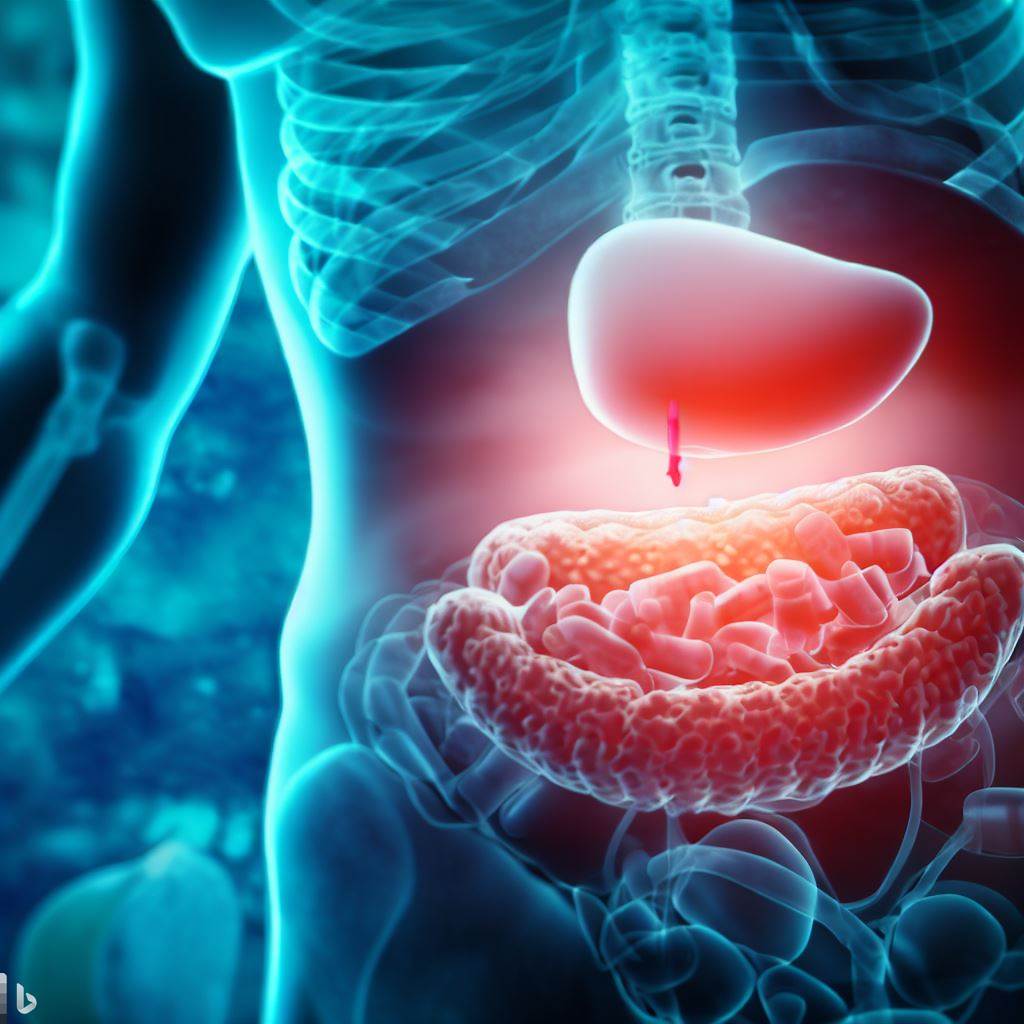Table of Contents
Semaglutide: A Breakthrough in Diabetes Management
Semaglutide is a glucagon-like peptide-1 (GLP-1) receptor agonist, a class of medications primarily used for treating type 2 diabetes mellitus (T2DM). Developed by Novo Nordisk, semaglutide stands out for its powerful efficacy and strong safety record.
GLP-1 is a hormone produced in the intestines in response to eating. It regulates blood sugar by stimulating insulin release from pancreatic beta cells, inhibiting glucagon release from pancreatic alpha cells, and slowing gastric emptying to control post-meal blood sugar spikes. However, natural GLP-1 degrades quickly in the body. Semaglutide, resistant to this degradation, mimics GLP-1’s actions effectively and for a longer duration.
Semaglutide binds to GLP-1 receptors on pancreatic beta cells, activating pathways that release insulin when blood glucose levels are high. This glucose-dependent mechanism ensures insulin is only released when needed, preventing low blood sugar (hypoglycemia). Additionally, semaglutide suppresses glucagon, a hormone that raises blood sugar by prompting glucose release from the liver, thus further stabilizing blood sugar levels.
Clinical trials have shown that semaglutide significantly reduces hemoglobin A1c (HbA1c) levels, indicating better long-term blood sugar management. Many patients also experience weight loss, a crucial benefit for those with T2DM who struggle with obesity.
Semaglutide is generally well-tolerated. Common side effects include nausea, vomiting, and diarrhea, which typically decrease over time. Rare but serious risks such as pancreatitis and thyroid tumors have been noted, though the overall risk remains low.
Semaglutide is a significant advancement in T2DM treatment, offering improved blood sugar control and weight loss benefits. With its robust efficacy and safety profile, semaglutide is an essential option for those seeking optimal diabetes management. Ongoing research continues to uncover its potential for broader patient benefits.
Understanding GLP-1 Receptor Agonists
GLP-1 receptor agonists are medications designed to mimic the action of GLP-1, a hormone released by the intestines in response to food. These drugs, such as semaglutide, leverage the body’s natural mechanisms to regulate blood sugar levels.
Role of GLP-1 in Glucose Homeostasis:
GLP-1 is crucial for maintaining blood sugar balance. Upon eating, GLP-1 is released from the intestines and acts primarily on the pancreas and gastrointestinal tract.
Pancreatic Effects:
- Insulin Secretion: GLP-1 stimulates insulin release from pancreatic beta cells. Insulin helps cells absorb glucose, reducing blood sugar levels. This effect is glucose-dependent, increasing insulin only when blood sugar is high, thus minimizing hypoglycemia risk.
- Glucagon Inhibition: GLP-1 suppresses glucagon release from pancreatic alpha cells. Glucagon raises blood sugar by promoting glucose release from the liver. By inhibiting glucagon, GLP-1 reduces unnecessary glucose production.
Gastrointestinal Effects:
GLP-1 slows gastric emptying, delaying nutrient absorption into the bloodstream. This results in more stable blood sugar levels after meals.
Pharmacological Advantages of GLP-1 Receptor Agonists:
GLP-1 receptor agonists like semaglutide are engineered to resist degradation by the enzyme DPP-4, extending their action. This prolonged activity provides sustained stimulation of GLP-1 receptors, leading to better long-term blood sugar control.
Therapeutic Benefits:
By mimicking GLP-1, semaglutide enhances insulin secretion, inhibits glucagon release, and delays gastric emptying. These combined effects offer a powerful approach to managing type 2 diabetes, ensuring more consistent and controlled blood sugar levels.
Understanding the role of GLP-1 and how GLP-1 receptor agonists like semaglutide exploit this hormone’s natural actions reveals their significant therapeutic benefits for diabetes management. This multifaceted mechanism offers a promising avenue for improving glycemic control and overall metabolic health.
Activation of GLP-1 Receptors: The Role of Semaglutide in T2DM Management
Understanding how semaglutide interacts with GLP-1 receptors is pivotal in managing type 2 diabetes mellitus (T2DM). This section explores the molecular mechanisms behind GLP-1 receptor activation by semaglutide and its implications for glucose control.
Molecular Mechanisms of GLP-1 Receptor Activation
GLP-1 receptors are part of the class B family of G protein-coupled receptors (GPCRs). These receptors, embedded in cell membranes, are crucial for signal transduction. When GLP-1 or semaglutide binds to these receptors, it induces conformational changes that activate downstream signaling pathways.
G Protein Coupling
Activated GLP-1 receptors couple with G proteins, composed of α, β, and γ subunits. This coupling initiates a cascade of intracellular events, starting with the dissociation of the Gα subunit from the Gβγ subunits.
Intracellular Signaling Pathways
The dissociated Gα subunit activates adenylyl cyclase, converting ATP into cyclic adenosine monophosphate (cAMP). Elevated cAMP levels then activate protein kinase A (PKA), which phosphorylates proteins involved in insulin secretion, gene transcription, and metabolism. Additionally, GLP-1 receptors recruit and activate β-arrestin proteins, modulating receptor desensitization and internalization, thus prolonging receptor signaling and recycling.
Insulin Secretion
A primary effect of GLP-1 receptor activation is stimulating insulin secretion from pancreatic beta cells. This occurs via PKA activation and other pathways, leading to insulin release into the bloodstream. Notably, semaglutide-induced insulin secretion is glucose-dependent, reducing the risk of hypoglycemia.
Glucagon Inhibition
GLP-1 receptor activation also suppresses glucagon release from pancreatic alpha cells through PKA-dependent phosphorylation of proteins involved in glucagon secretion. By lowering glucagon levels, semaglutide helps prevent excessive glucose production by the liver, enhancing glucose-lowering effects.
Semaglutide’s activation of GLP-1 receptors triggers complex intracellular signaling that improves glycemic control in T2DM. It stimulates insulin secretion, inhibits glucagon release, and modulates metabolic pathways, offering a multifaceted approach to blood sugar management. Ongoing research into GLP-1 receptor mechanisms may reveal new therapeutic targets for diabetes and related disorders.
Action Points
- For Patients: Understanding the role of GLP-1 receptor activation can help you appreciate the benefits of medications like semaglutide in managing T2DM.
- For Healthcare Providers: Incorporate the knowledge of these molecular mechanisms into patient education to enhance adherence and outcomes.
- For Researchers: Focus on further elucidating these pathways to uncover potential new treatments for diabetes and metabolic disorders.

Regulation of Blood Glucose Levels
Semaglutide significantly impacts blood sugar regulation, essential for managing type 2 diabetes mellitus (T2DM). This section explores how semaglutide controls blood glucose, focusing on insulin secretion and glucose utilization.
Insulin Secretion and Glucose Utilization
Semaglutide enhances insulin secretion from pancreatic beta cells, a hormone vital for transporting glucose from the bloodstream into cells for energy or storage. By stimulating glucose-dependent insulin release, semaglutide aids glucose uptake, lowering blood sugar levels.
Glucose-Dependent Insulin Secretion
Semaglutide boosts insulin secretion only when blood glucose levels rise, minimizing hypoglycemia risk, unlike some diabetes medications. This precise insulin release ensures safety and effectiveness in glucose control.
Postprandial Glucose Control
Semaglutide regulates after-meal glucose spikes by delaying gastric emptying and slowing nutrient absorption. This stabilization of postprandial glucose levels reduces the overall glycemic burden over time.
Glucose Utilization in Peripheral Tissues
Semaglutide may enhance glucose uptake and utilization in peripheral tissues like muscles and adipose tissue, improving glycemic control and metabolic health. Additionally, it has been linked to weight loss, reflecting changes in adipose tissue metabolism and energy balance.
Effects on Hepatic Glucose Production
By inhibiting glucagon release from pancreatic alpha cells, semaglutide suppresses liver glucose production, further lowering blood sugar levels.
Comprehensive Glucose Regulation
Semaglutide offers a multifaceted approach to glucose regulation, enhancing insulin secretion, improving peripheral glucose utilization, and reducing hepatic glucose production. This comprehensive strategy optimizes glycemic control in individuals with T2DM, highlighting the therapeutic benefits of semaglutide.
Take action now by considering semaglutide as a powerful tool in your diabetes management plan to achieve better blood sugar control and improved overall health.
Influence on Appetite and Weight: The Impact of Semaglutide
Semaglutide plays a critical role in appetite regulation and weight management, especially in the treatment of type 2 diabetes mellitus (T2DM) and obesity. This section delves into how semaglutide influences appetite and body weight, highlighting its mechanisms and clinical significance.
Appetite Regulation
Appetite regulation is a complex interplay of physiological and psychological factors. Semaglutide, a GLP-1 receptor agonist, significantly modulates this process. GLP-1 receptors, present in key brain regions such as the hypothalamus and brainstem nuclei, are pivotal in controlling appetite and satiety.
Central Mechanisms
When semaglutide activates GLP-1 receptors in the central nervous system (CNS), it alters neurotransmitter release and neuronal activity, leading to reduced appetite and increased satiety. This central action contributes to semaglutide’s strong appetite-suppressing effects, aiding individuals with T2DM in better managing their food intake and body weight.
Gut-Brain Axis
Semaglutide also impacts the gut-brain axis, a vital communication system between the gastrointestinal tract and the brain. GLP-1 receptors are abundant in the intestines’ enteroendocrine cells, where they regulate hormone secretion and gut motility. By enhancing GLP-1 receptor activation in the gut, semaglutide indirectly affects appetite and satiety through changes in gut hormone release and gastric emptying.
Clinical Evidence
Clinical studies consistently show that semaglutide promotes significant weight loss in individuals with T2DM and obesity. Large randomized controlled trials reveal that semaglutide treatment leads to more substantial reductions in body weight compared to placebo or other diabetes medications, underscoring its potent effects on appetite control and energy balance.
Mechanisms of Weight Loss
Semaglutide-induced weight loss is multifactorial, involving reduced food intake, increased energy expenditure, and changes in fat metabolism. By suppressing appetite and enhancing satiety, semaglutide helps individuals consume fewer calories, resulting in a negative energy balance and subsequent weight loss. Additionally, GLP-1 receptor activation may boost thermogenesis (heat production) and fat oxidation, further aiding in weight reduction.
Long-Term Maintenance
Sustaining weight loss over the long term is challenging, but semaglutide therapy has shown promise. Studies indicate that semaglutide can lead to durable weight loss maintenance in individuals with T2DM and obesity, even after treatment discontinuation. This sustained effect likely stems from changes in eating behaviors, metabolic adaptations induced by semaglutide, and ongoing lifestyle modifications by patients.
Semaglutide’s impact on appetite regulation and weight management makes it a valuable therapeutic option for individuals with T2DM and obesity. By addressing both glycemic control and body weight, semaglutide offers a comprehensive approach to improving metabolic health and reducing cardiovascular risk. Understanding the mechanisms behind semaglutide-induced weight loss provides valuable insights into its clinical efficacy and potential applications in managing obesity-related conditions.
Cardiovascular Benefits of Semaglutide: Enhancing Heart Health in T2DM
Semaglutide’s benefits extend beyond glycemic control and weight management, significantly improving cardiovascular health in patients with type 2 diabetes mellitus (T2DM). Here’s how it makes a difference:
Heightened Cardiovascular Risk in T2DM
Patients with T2DM face a higher risk of cardiovascular diseases like coronary artery disease, stroke, and heart failure. Key factors like hyperglycemia, insulin resistance, dyslipidemia, and hypertension contribute to this risk. Effective management must target both blood sugar levels and cardiovascular risk factors.
Proven Clinical Benefits
Large-scale trials such as the SUSTAIN and SELECT studies highlight semaglutide’s effectiveness. These trials show that semaglutide reduces major adverse cardiovascular events (MACE) — including cardiovascular death, nonfatal heart attacks, and nonfatal strokes — more effectively than placebos or other diabetes medications.
Mechanisms Behind the Benefits
Semaglutide’s cardiovascular benefits stem from multiple mechanisms. By enhancing insulin secretion, reducing glucagon levels, and suppressing appetite, it improves glycemic control and promotes weight loss, which in turn mitigates risk factors like hyperglycemia, dyslipidemia, and hypertension.
Direct Cardiovascular Actions
Beyond metabolic improvements, semaglutide acts directly on the cardiovascular system. It activates GLP-1 receptors in cardiac cells, endothelial cells, and vascular smooth muscle cells, leading to cardioprotective effects such as better myocardial contractility, vasodilation, and anti-inflammatory actions.
Antiatherogenic Benefits
Semaglutide also benefits lipid metabolism, reducing the formation of atherosclerotic plaques and lowering the risk of cardiovascular events. It improves lipid profiles by decreasing triglycerides and low-density lipoprotein cholesterol (LDL-C) levels while increasing high-density lipoprotein cholesterol (HDL-C).
Semaglutide offers crucial cardiovascular benefits for T2DM patients by reducing risk factors, improving endothelial function, and providing direct heart protection. Ongoing research aims to further elucidate its long-term cardiovascular effects and optimize its use in managing diabetes and cardiovascular comorbidities.

Potential Side Effects of Semaglutide
Semaglutide, a powerful tool in managing type 2 diabetes (T2DM), comes with potential side effects that must be acknowledged and managed. This section provides an overview of common and less common side effects, their mechanisms, and strategies for effective management.
Common Side Effects
Semaglutide often causes gastrointestinal issues, including nausea, vomiting, diarrhea, and abdominal discomfort. These symptoms usually appear in the initial weeks and tend to lessen as the body adapts.
Mechanism: The gastrointestinal effects stem from semaglutide’s influence on gastric emptying and gut hormone secretion. It slows gastric motility and boosts hormones like peptide YY (PYY) and GLP-1, which can induce nausea and a feeling of fullness.
Management Strategies:
- Gradual Dose Titration: Start with a low dose and gradually increase to minimize gastrointestinal symptoms.
- Taking with Food: Consuming semaglutide with meals can reduce nausea and discomfort.
- Hydration: Drink plenty of fluids to combat dehydration from vomiting and diarrhea.
- Antiemetic Medications: For persistent nausea, medications like ondansetron may be prescribed.
Less Common Side Effects
- Pancreatitis: Rare but serious, pancreatitis presents with severe abdominal pain, nausea, and vomiting. Immediate medical attention is necessary if suspected.
- Hypoglycemia: While semaglutide alone poses a lower risk, combining it with insulin or insulin secretagogues can lead to hypoglycemia.
- Cardiovascular and Renal Effects: Some studies suggest potential increases in heart rate and renal issues, but the overall safety profile remains favorable.
Semaglutide is generally well-tolerated, with gastrointestinal symptoms being the most prevalent. Employing management strategies and monitoring for rare side effects can enhance the safety and effectiveness of semaglutide in treating T2DM. Close monitoring and patient education are critical to ensure optimal use in clinical practice.
Medical Uses of Semaglutide
Semaglutide is a powerful treatment for type 2 diabetes mellitus (T2DM) with benefits that extend beyond blood sugar control. This section highlights its uses in managing diabetes, promoting weight loss, and other potential medical applications.
Primary Indications
Semaglutide is primarily used to treat T2DM, either alone or with other antidiabetic drugs like metformin, sulfonylureas, or insulin. Available as a subcutaneous injection or oral tablet, it offers flexible dosing and administration.
Glycemic Control
Semaglutide significantly improves glycemic control, as shown by reductions in hemoglobin A1c (HbA1c) in clinical trials. It works by stimulating insulin secretion in response to high blood sugar levels, achieving target glycemic goals with minimal risk of hypoglycemia.
Weight Management
Beyond diabetes control, semaglutide is effective for weight loss in individuals with T2DM and obesity. Clinical trials demonstrate greater weight reductions compared to placebo or other diabetes medications. This weight loss is likely due to appetite suppression, delayed gastric emptying, and increased energy expenditure.
Cardiovascular Benefits
Semaglutide also reduces major adverse cardiovascular events (MACE) in T2DM patients. Clinical trials show lower rates of cardiovascular death, nonfatal myocardial infarction, and stroke compared to placebo or other diabetes drugs, highlighting its role in reducing cardiovascular risk.
Renal Effects
Emerging evidence indicates that semaglutide benefits renal function in T2DM patients. Studies show it can reduce the risk of diabetic kidney disease progression and improve renal markers such as estimated glomerular filtration rate (eGFR) and urinary albumin excretion.
Potential Applications in Other Conditions
Semaglutide may also be useful in conditions beyond T2DM and obesity. Early studies suggest potential benefits in nonalcoholic fatty liver disease (NAFLD), chronic kidney disease (CKD), and neurodegenerative disorders, though more research is needed.
Semaglutide offers a comprehensive approach to managing type 2 diabetes, addressing glycemic control, weight management, and cardiovascular risk reduction. Its potential applications extend to other metabolic and cardiovascular conditions. Ongoing research will continue to define its role in optimizing patient outcomes across various diseases.
Comparison with Other Medications
Understanding how semaglutide compares with other medications for type 2 diabetes mellitus (T2DM) is vital for making informed treatment decisions. This section highlights semaglutide’s advantages, disadvantages, and unique features compared to other antidiabetic medications.
GLP-1 Receptor Agonists vs. Other Antidiabetic Medications
GLP-1 receptor agonists, including semaglutide, offer distinct advantages in efficacy, safety, and tolerability. Unlike sulfonylureas and thiazolidinediones, which increase insulin secretion or improve sensitivity, GLP-1 receptor agonists target multiple aspects of glucose metabolism: insulin secretion, glucagon inhibition, and appetite regulation.
Advantages of Semaglutide
- Weight Loss: Semaglutide promotes significant weight loss, making it a preferable option for overweight or obese T2DM patients, unlike insulin and sulfonylureas, which can cause weight gain.
- Cardiovascular Benefits: Semaglutide reduces the risk of major adverse cardiovascular events (MACE) such as heart attack and stroke, a benefit not shared by all antidiabetic medications.
- Convenient Dosing: The once-weekly injectable formulation of semaglutide enhances patient adherence and satisfaction compared to daily or twice-daily dosing required by other GLP-1 receptor agonists.
Comparison with Insulin
Semaglutide and insulin both lower blood sugar effectively, but they differ significantly:
- Hypoglycemia Risk: Semaglutide has a lower hypoglycemia risk due to its glucose-dependent action, which stimulates insulin release only when blood glucose levels are high.
- Weight Effects: While insulin is often associated with weight gain, semaglutide promotes weight loss, beneficial for patients struggling with obesity.
Comparison with Other GLP-1 Receptor Agonists
- Efficacy: Semaglutide shows superior glycemic control and weight loss compared to other GLP-1 receptor agonists, likely due to its higher potency and longer action duration.
- Safety Profile: While GLP-1 receptor agonists generally have a favorable safety profile, the incidence and severity of side effects may vary. Providers should tailor treatment choices to individual patient needs.
Semaglutide stands out among antidiabetic medications for its weight loss benefits, cardiovascular protection, and convenient dosing. It offers superior efficacy and a favorable safety profile compared to insulin and other GLP-1 receptor agonists. However, treatment decisions should be personalized, considering each patient’s specific needs and preferences.
Future Directions and Research Outlook
As semaglutide proves its effectiveness in managing type 2 diabetes mellitus (T2DM) and other metabolic conditions, research is expanding to uncover new applications and optimize its use. This section outlines key future directions in semaglutide research, emphasizing areas of innovation and potential breakthroughs.
- Mechanistic Insights
While semaglutide’s effects on glucose metabolism, weight loss, and cardiovascular health are well-known, research aims to uncover more detailed mechanisms. This includes understanding how semaglutide modulates appetite, influences energy expenditure, affects fat metabolism, and interacts with tissues beyond the pancreas and gastrointestinal tract. - Personalized Medicine
Future studies focus on personalized medicine approaches to tailor semaglutide treatment based on genetic, metabolic, and clinical data. By identifying genetic markers linked to treatment response and side effects, researchers hope to optimize patient selection, ensuring those who benefit most receive the therapy with minimized risks. - Combination Therapies
Investigating semaglutide in combination with other antidiabetic medications is a promising research avenue. Combining drugs that target various aspects of T2DM, such as insulin resistance and beta-cell dysfunction, could enhance efficacy and tolerance. Current clinical trials are exploring semaglutide with SGLT-2 inhibitors and DPP-4 inhibitors for improved outcomes. - Long-Term Outcomes
Long-term studies and real-world evidence are crucial to assessing the sustainability of semaglutide’s benefits on glycemic control, weight management, and cardiovascular health. These studies will help determine the long-term impact on mortality, cardiovascular events, and quality of life, providing a clearer picture of semaglutide’s durability and safety. - Non-Diabetic Indications
Beyond T2DM and obesity, semaglutide shows promise in treating conditions like nonalcoholic fatty liver disease (NAFLD), chronic kidney disease (CKD), and neurodegenerative disorders. Early research and clinical trials indicate that semaglutide’s therapeutic applications may extend far beyond metabolic disorders. - Novel Formulations
Advancements in drug delivery technology may lead to new semaglutide formulations with better pharmacokinetics and patient convenience. Innovations include sustained-release, oral, transdermal, and depot formulations with extended action duration, aiming to improve efficacy, safety, and adherence to semaglutide therapy.
The future of semaglutide research involves a multidisciplinary approach to maximize its therapeutic potential and meet unmet clinical needs in T2DM and related conditions. Advances in mechanistic understanding, personalized medicine, combination therapies, and drug delivery technologies will enhance the clinical efficacy and patient-centered outcomes of semaglutide therapy. Collaboration among academia, industry, and regulatory bodies will be vital to translating these findings into practice and improving patient lives.
Conclusion: Semaglutide: Transforming Type 2 Diabetes Management
Semaglutide marks a groundbreaking advance in type 2 diabetes mellitus (T2DM) management, offering multifaceted benefits beyond mere glycemic control. This article has delved into the complex mechanisms by which semaglutide influences glucose metabolism, weight management, cardiovascular health, and other metabolic parameters, addressing common questions and concerns along the way.
Semaglutide enhances insulin secretion, curtails glucagon release, and slows gastric emptying, leading to potent glucose-lowering effects and improved glycemic control in T2DM patients. Its unique pharmacological profile, which includes appetite suppression and weight loss, makes it an invaluable option for patients struggling with obesity—a common comorbidity with T2DM.
The cardiovascular benefits of semaglutide are particularly striking. Clinical trials have shown significant reductions in major adverse cardiovascular events (MACE) and improvements in cardiovascular outcomes. Combined with its favorable safety profile and convenient dosing, semaglutide is a cornerstone therapy in managing T2DM and associated cardiovascular risks.
While gastrointestinal symptoms are the most common side effects, they can often be mitigated with proper monitoring and management, allowing patients to fully benefit from semaglutide therapy.
The future of semaglutide research is promising. Ongoing studies aim to uncover additional mechanisms, explore new applications in conditions like nonalcoholic fatty liver disease (NAFLD) and chronic kidney disease (CKD), and refine personalized treatment approaches.
In summary, semaglutide signifies a paradigm shift in T2DM management, offering comprehensive glycemic control, weight management, and cardiovascular risk reduction. Its potent efficacy, safety, and potential for personalized treatment can transform diabetes care and improve outcomes for millions worldwide. As our understanding of semaglutide’s mechanisms and applications grows, its role in optimizing metabolic health and reducing diabetes-related complications will become increasingly significant.
To learn more about the cost of semaglutide with BMI Doctors, click here.
Questions and Answers: How does semaglutide work?
Semaglutide is a medication that improves the body’s ability to regulate blood sugar levels, reduces feelings of hunger, and has positive benefits to cardiovascular health. It is used in managing type 2 diabetes and comes in the form of an oral tablet or an injection taken once a week.
No, Semaglutide is not insulin. It should not be used as a substitute for insulin in the treatment of those with type 1 diabetes or diabetics who need insulin.
Semaglutide acts like the hormone glucagon-like peptide-1 (GLP-1), produced during and after eating, affecting appetite and hunger levels. It binds to and activates GLP-1 receptors to help increase insulin levels and slow digestion, controlling blood sugar levels and reducing heart attack or stroke risk in high-risk cardiovascular disease patients.
Common side effects include stomach problems like nausea, vomiting, upset stomach, and constipation. Others may experience allergic reactions, heart palpitations, trouble breathing, dehydration, vision changes, and, in some cases, problems with the kidneys, pancreas, or gallbladder.
Suitable candidates include adults with a BMI of 30 or more, adults with a BMI of 27-29 who have a weight-related comorbid condition like hypertension or type 2 diabetes, and children 12 years and older with a BMI in the 95th percentile or greater.
Semaglutide can be administered weekly, at any time of day but on the same day each week, with or without meals.
Semaglutide should be injected subcutaneously into the upper arms, abdomen, or thighs.
The maintenance dose of Semaglutide is 2.4 mg once weekly.
Semaglutide is contraindicated for those with a personal or family history of medullary thyroid carcinoma or Multiple Endocrine Neoplasia syndrome type 2, or in case of hypersensitivity to Semaglutide.
The most common side effects include nausea, diarrhea/constipation, feeling bloated, heartburn, belching, dizziness, vomiting, and upset stomach.

Dr. Jay Flottman
Dr. Jay Flottmann is a physician in Panama City, FL. He received his medical degree from University of Texas Medical Branch and has been in practice 21 years. He is experienced in military medicine, an FAA medical examiner, human performance expert, and fighter pilot.
Professionally, I am a medical doctor (M.D. from the University of Texas Medical Branch at Galveston), a fighter pilot (United States Air Force trained – F-15C/F-22/AT-38C), and entrepreneur.
